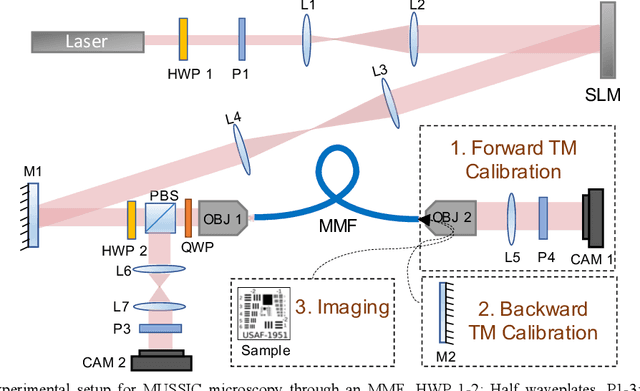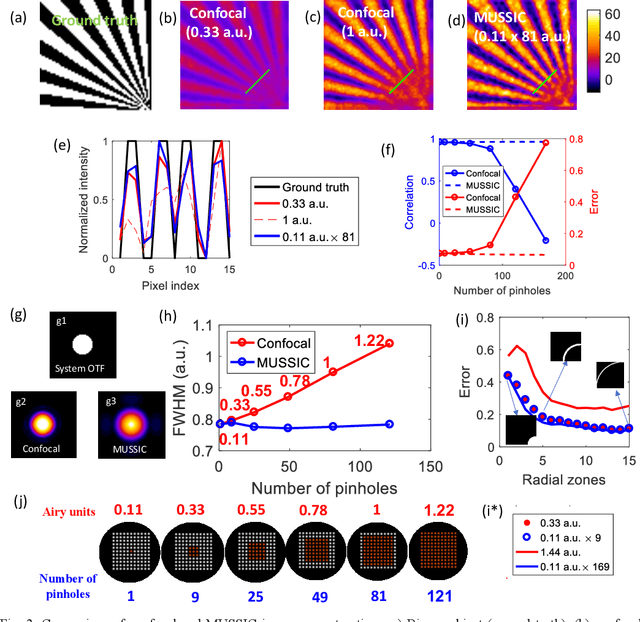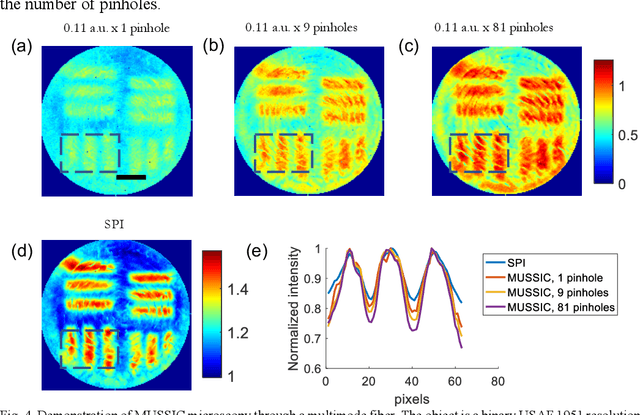Rafael Piestun
Aberration correction in epi-fluorescence microscopy using unknown speckle illumination
Dec 19, 2023Abstract:Diffraction-limited imaging in epi-fluorescence microscopy remains a challenge when sample aberrations are present or when the region of interest rests deep within an inhomogeneous medium. Adaptive optics is an attractive solution albeit with limited field of view and requiring relatively complicated systems. Alternatively, reconstruction algorithms have been developed over the years to correct for aberrations. Unfortunately, purely postprocessing techniques tend to be ill-posed and provide only incremental improvements in image quality. Here, we report a computational optical approach using unknown speckle illumination and matched reconstruction algorithm to correct for aberrations and reach or surpass diffraction limited resolution. The data acquisition is performed by shifting an unknown speckle pattern with respect to the fluorescent object. The method recovers simultaneously a high-resolution image, the point spread function of the system that contains the aberrations, the speckle illumination pattern, and the shift positions.
Multiview Scattering Scanning Imaging Confocal Microscopy through a Multimode Fiber
Feb 22, 2022



Abstract:Confocal and multiphoton microscopy are effective techniques to obtain high-contrast images of 2-D sections within bulk tissue. However, scattering limits their application to depths only up to ~1 millimeter. Multimode fibers make excellent ultrathin endoscopes that can penetrate deep inside the tissue with minimal damage. Here, we present Multiview Scattering Scanning Imaging Confocal (MUSSIC) Microscopy that enables high signal-to-noise ratio (SNR) imaging through a multimode fiber, hence combining the optical sectioning and resolution gain of confocal microscopy with the minimally invasive penetration capability of multimode fibers. The key advance presented here is the high SNR image reconstruction enabled by employing multiple coplanar virtual pinholes to capture multiple perspectives of the object, re-shifting them appropriately and combining them to obtain a high-contrast and high-resolution confocal image. We present the theory for the gain in contrast and resolution in MUSSIC microscopy and validate the concept through experimental results.
 Add to Chrome
Add to Chrome Add to Firefox
Add to Firefox Add to Edge
Add to Edge